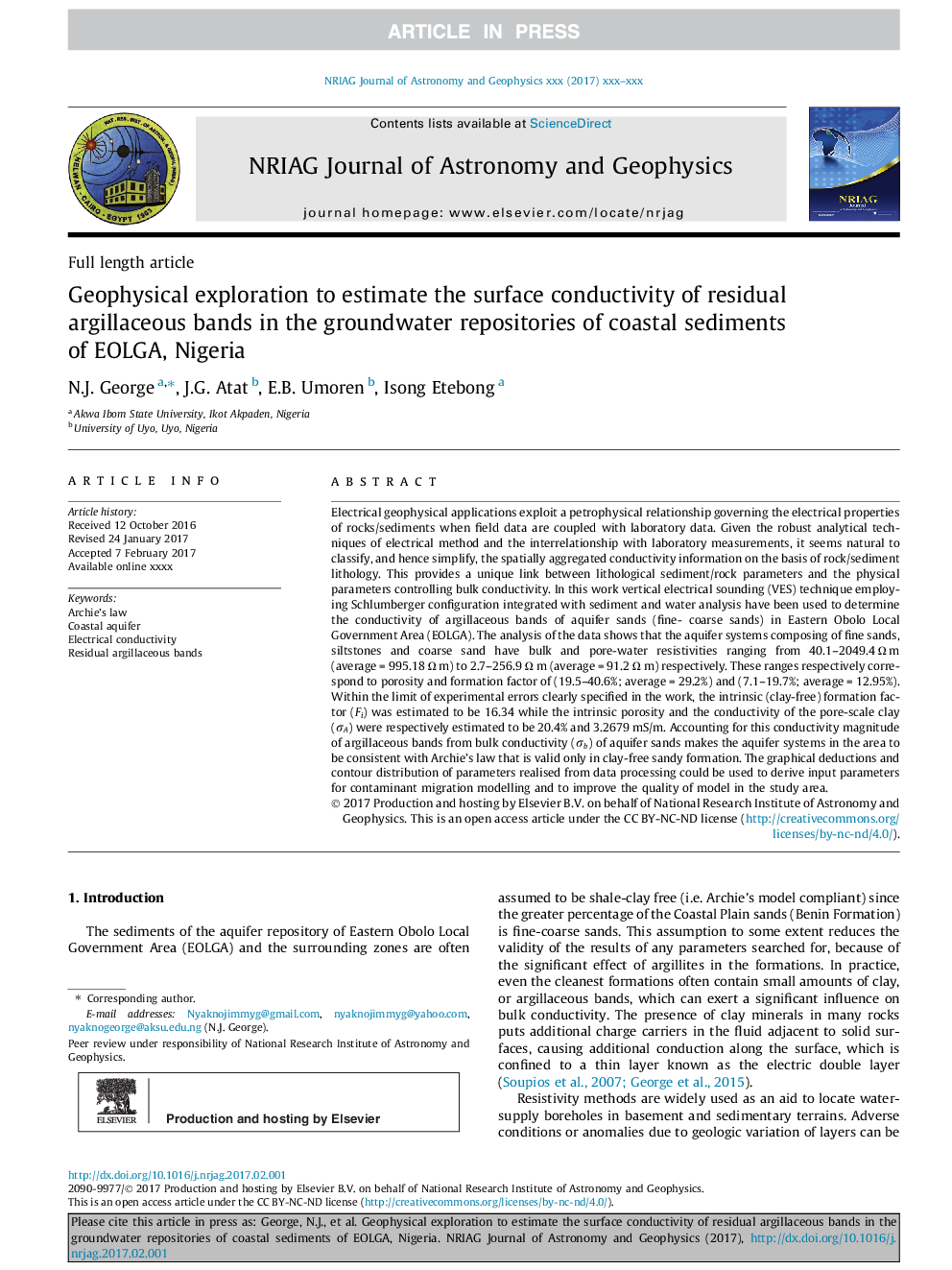| Article ID | Journal | Published Year | Pages | File Type |
|---|---|---|---|---|
| 8141704 | NRIAG Journal of Astronomy and Geophysics | 2017 | 10 Pages |
Abstract
Electrical geophysical applications exploit a petrophysical relationship governing the electrical properties of rocks/sediments when field data are coupled with laboratory data. Given the robust analytical techniques of electrical method and the interrelationship with laboratory measurements, it seems natural to classify, and hence simplify, the spatially aggregated conductivity information on the basis of rock/sediment lithology. This provides a unique link between lithological sediment/rock parameters and the physical parameters controlling bulk conductivity. In this work vertical electrical sounding (VES) technique employing Schlumberger configuration integrated with sediment and water analysis have been used to determine the conductivity of argillaceous bands of aquifer sands (fine- coarse sands) in Eastern Obolo Local Government Area (EOLGA). The analysis of the data shows that the aquifer systems composing of fine sands, siltstones and coarse sand have bulk and pore-water resistivities ranging from 40.1-2049.4 Ω m (average = 995.18 Ω m) to 2.7-256.9 Ω m (average = 91.2 Ω m) respectively. These ranges respectively correspond to porosity and formation factor of (19.5-40.6%; average = 29.2%) and (7.1-19.7%; average = 12.95%). Within the limit of experimental errors clearly specified in the work, the intrinsic (clay-free) formation factor (Fi) was estimated to be 16.34 while the intrinsic porosity and the conductivity of the pore-scale clay (ÏA) were respectively estimated to be 20.4% and 3.2679 mS/m. Accounting for this conductivity magnitude of argillaceous bands from bulk conductivity (Ïb) of aquifer sands makes the aquifer systems in the area to be consistent with Archie's law that is valid only in clay-free sandy formation. The graphical deductions and contour distribution of parameters realised from data processing could be used to derive input parameters for contaminant migration modelling and to improve the quality of model in the study area.
Related Topics
Physical Sciences and Engineering
Physics and Astronomy
Astronomy and Astrophysics
Authors
N.J. George, J.G. Atat, E.B. Umoren, Isong Etebong,
